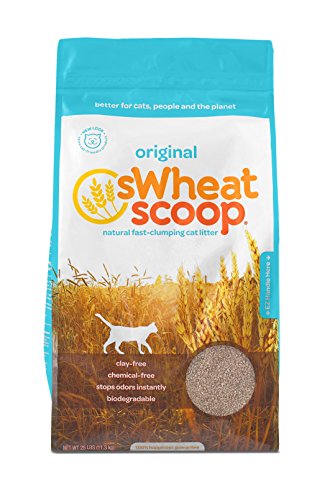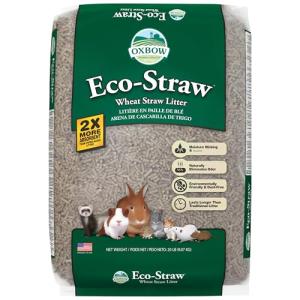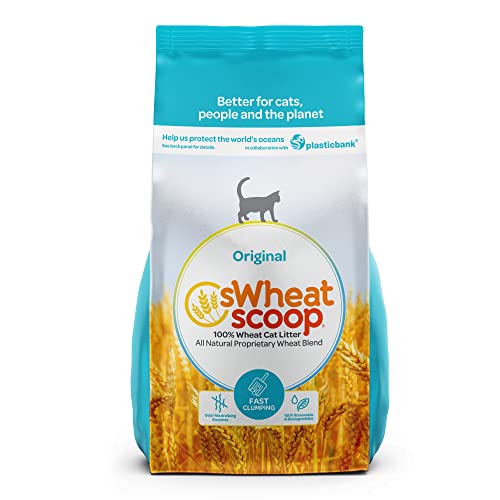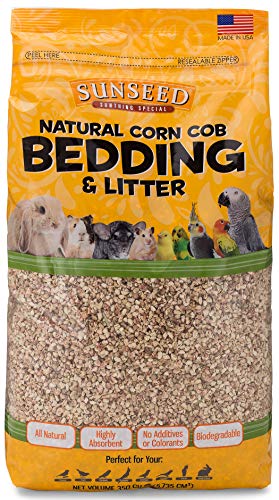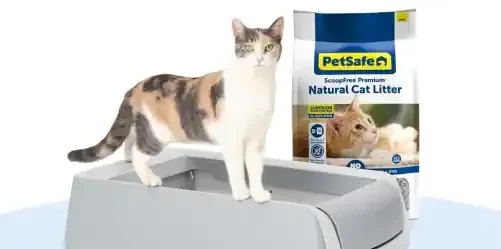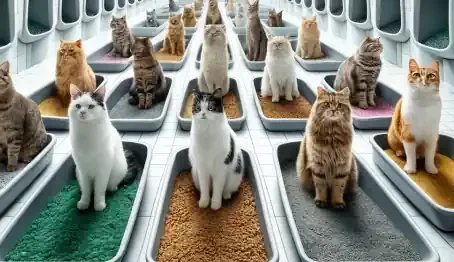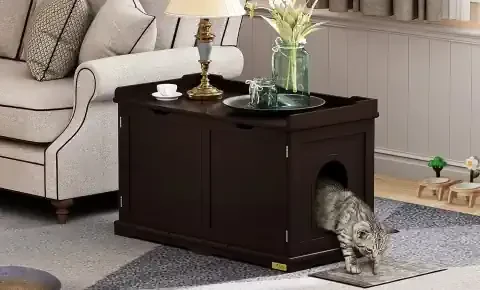Prioritizing Your Cat's Respiratory Health: The Dust-Free Advantage Of Natural Litter
A common concern among cat owners is the dust cloud that erupts every time their furry friend uses the litter box. Traditional clay litters are notorious for their dust, which can pose serious health risks for both cats and humans. Natural cat litter offers a breath of fresh air – literally! – by prioritizing respiratory health through its dust-free composition.
Reduced Risk Of Respiratory Issues In Cats
The fine dust particles in clay litter can easily become airborne, irritating your cat's delicate respiratory system. Inhaling this dust over time can lead to chronic respiratory problems like asthma, bronchitis, and even lung damage. Natural cat litter, made from materials like wood, paper, or plant fibers, produces significantly less dust, safeguarding your cat's lungs and promoting overall respiratory well-being.
Minimizing Allergies And Asthma Triggers
Both cats and humans can suffer from allergies and asthma triggered by airborne dust particles. Natural cat litter's low-dust formulation minimizes the risk of triggering allergic reactions or asthma attacks, creating a healthier environment for everyone in the household. This is especially beneficial for cats and humans with pre-existing respiratory conditions.
Safer For Humans With Respiratory Sensitivities
Humans with respiratory sensitivities, such as allergies or asthma, can be particularly vulnerable to the dust from clay litters. By choosing natural cat litter, you can reduce the risk of triggering their symptoms, creating a more comfortable and safe living environment for everyone.
Promoting A Cleaner And Healthier Home Environment
Dust from clay litter not only affects respiratory health but also contributes to a dirty home environment. It settles on surfaces, making cleaning more difficult and potentially spreading allergens throughout your living space. Natural cat litter's low-dust properties help maintain a cleaner home, reducing the need for constant dusting and minimizing allergen exposure.
Long-Term Benefits For Respiratory Well-Being
By switching to natural cat litter, you're making a long-term investment in your cat's respiratory health. The reduced dust exposure can help prevent the development of chronic respiratory issues, ensuring your feline companion breathes easy for years to come. Additionally, the improved air quality benefits everyone in the household, promoting a healthier and happier living environment overall.
Safeguarding Your Cat's Paws: Gentle And Non-Irritating Natural Materials
A cat's paws are sensitive instruments, designed for delicate tasks like hunting, climbing, and grooming. Traditional clay litters, with their sharp edges and abrasive textures, can irritate delicate paw pads, leading to discomfort and even injury. Natural cat litter offers a softer, gentler alternative, prioritizing the health and comfort of your feline friend's paws.
Avoiding Harsh Chemicals And Irritants
Many clay litters contain harsh chemicals like silica dust, fragrances, and dyes, which can irritate your cat's paws and cause allergic reactions. Natural cat litters are made from plant-based materials like wood, corn, wheat, or paper, which are free from these harmful additives. This minimizes the risk of skin irritation, allergies, and other health issues that can arise from contact with harsh chemicals.
Softer On Sensitive Paws
The natural materials used in alternative litters are typically softer and more gentle on your cat's paws compared to the rough texture of clay. This is especially beneficial for cats with sensitive paws or those prone to paw pad injuries. Natural litters provide a comfortable surface for digging and covering, promoting a positive litter box experience and encouraging regular use.
Reducing The Risk Of Paw Irritation And Allergies
By opting for natural cat litter, you're significantly reducing the risk of paw irritation and allergies. The absence of harsh chemicals and abrasive particles creates a safer environment for your cat's paws, minimizing the chances of itching, redness, swelling, or other allergic reactions. This can lead to happier and healthier paws, allowing your cat to move freely and comfortably.
Promoting Comfort And Well-Being
Comfortable paws are essential for a cat's overall well-being. When their paws are free from irritation and discomfort, they can fully enjoy their daily activities, whether it's playing, exploring, or simply lounging around. Natural cat litter contributes to their comfort by providing a soft and gentle surface for their paws to interact with.
Biodegradable And Compostable Options
Many natural cat litters are made from biodegradable and compostable materials, further demonstrating their commitment to your cat's well-being and the environment. These litters break down naturally, reducing waste and minimizing their impact on the planet. By choosing a biodegradable or compostable natural litter, you're not only prioritizing your cat's comfort but also making a responsible choice for the environment.
Eco-Conscious Choice: Sustainability And Environmental Impact
Choosing natural cat litter isn't just about the health of your feline companion; it's also about making a responsible choice for the planet. Traditional clay litters are mined from the earth, a process that can disrupt ecosystems and contribute to deforestation. They also generate significant waste, as they are not biodegradable and often end up in landfills. Natural cat litters offer a more sustainable and eco-friendly alternative, reducing your environmental footprint and promoting a healthier planet for all.
Renewable And Sustainable Materials
Many natural cat litters are made from renewable resources such as wood, corn, wheat, grass, or recycled paper. These materials are sourced from sustainable farms or forests, ensuring that their production does not harm the environment. By choosing natural cat litter, you're supporting sustainable practices and reducing the demand for environmentally damaging resources like clay.
Reduced Environmental Footprint
The production of natural cat litter typically has a lower environmental impact compared to traditional clay litter. This is due to factors like reduced energy consumption, lower greenhouse gas emissions, and the use of sustainable materials. Additionally, many natural litters are packaged in recyclable or compostable materials, further minimizing their impact on the environment.
Biodegradable And Compostable Options
One of the most significant advantages of natural cat litter is its biodegradability. Many natural litters are made from plant-based materials that break down naturally over time, reducing waste and minimizing their impact on landfills. Some natural litters are even compostable, meaning they can be added to your compost pile to enrich your garden soil.
Supporting Responsible Sourcing And Production
By choosing natural cat litter, you're supporting companies that prioritize responsible sourcing and production practices. These companies often partner with sustainable farms or forests, ensuring that the materials used in their products are harvested in an environmentally responsible manner. This helps protect ecosystems, conserve resources, and promote ethical business practices.
Contributing To A Healthier Planet For All
The choices we make as consumers have a ripple effect on the environment. By choosing natural cat litter, you're making a conscious decision to reduce your environmental footprint and support sustainable practices. This small change can collectively make a big difference, contributing to a healthier planet for both humans and animals.
Odor Control Powerhouse: Natural Materials That Trap And Neutralize Smells
One of the most common complaints about cat litter is the unpleasant odor that can permeate a home. Traditional clay litters often mask smells with artificial fragrances, which can be irritating to cats and humans alike. Natural cat litter takes a different approach, harnessing the power of natural ingredients to effectively trap and neutralize odors, leaving your home smelling fresh and clean.
Harnessing The Power Of Plant-Based Ingredients
Many natural cat litters utilize plant-based ingredients like activated charcoal, baking soda, or plant extracts known for their odor-absorbing properties. Activated charcoal, for example, is highly porous and can trap odor molecules, preventing them from escaping into the air. Baking soda acts as a natural deodorizer, neutralizing acidic odors and leaving behind a fresh scent. Plant extracts like cedarwood or lavender can also contribute to odor control while adding a subtle, natural fragrance.
Superior Odor Absorption And Neutralization
Unlike clay litters, which primarily absorb moisture, natural litters are designed to absorb both moisture and odor molecules. This dual-action approach ensures that unpleasant smells are trapped and neutralized at the source, preventing them from spreading throughout your home. The result is a cleaner and fresher-smelling litter box and living environment.
Reducing Ammonia And Other Unpleasant Smells
Cat urine contains ammonia, a pungent compound that can create an overpowering odor. Natural cat litters often contain ingredients that specifically target ammonia, breaking it down and neutralizing the smell. This is especially important for multi-cat households or for cats with urinary tract issues, as it helps maintain a more pleasant environment for both cats and humans.
Creating A Fresher Smelling Home
By effectively controlling odors, natural cat litter contributes to a fresher and more inviting home environment. You won't have to worry about unpleasant smells lingering in the air or guests noticing the telltale signs of a cat household. Instead, you can enjoy a clean and welcoming space that is free from the harsh chemical fragrances often found in traditional litters.
Natural Alternatives To Chemical Fragrances
Many commercial cat litters use artificial fragrances to mask odors, but these can be irritating to cats' sensitive noses and respiratory systems. Natural cat litters offer a healthier alternative, using natural ingredients like essential oils or plant extracts to provide a subtle and pleasant scent without the harsh chemicals. These natural fragrances can even have calming or stress-relieving properties for your cat, further enhancing their litter box experience.
Lightweight And Low-Tracking: Keeping Your Home Cleaner
Traditional clay litters are notorious for their heavy bags and messy tracking. The dense granules cling to your cat's paws, scattering across floors and furniture, leaving a trail of dust and debris in their wake. Natural cat litter offers a refreshing solution, prioritizing cleanliness and minimizing the mess for a tidier home.
Lightweight Formulas For Easy Handling
One of the most noticeable differences between natural and clay litters is their weight. Natural litters, particularly those made from wood or paper, are significantly lighter than clay. This makes them easier to carry, pour, and store, reducing the strain on your back and simplifying the litter box maintenance routine. For individuals with limited mobility or those who simply prefer a lighter option, natural litter offers a convenient and user-friendly solution.
Reduced Tracking And Scattering
Natural litters are designed with low-tracking properties in mind. The granules or pellets are often larger and less prone to sticking to your cat's paws. This means less litter gets scattered around the house, resulting in cleaner floors and less time spent sweeping or vacuuming. Some natural litters even feature a special coating or texture that further minimizes tracking, keeping your home cleaner and tidier.
Minimizing Mess And Cleanup
With their low-tracking and dust-free properties, natural cat litters significantly reduce the overall mess associated with litter box maintenance. You'll spend less time cleaning up scattered litter, dusting surfaces, and dealing with unpleasant odors. This can be especially beneficial for busy individuals or those with large households, as it frees up time and energy for other activities.
Ideal For Multi-Cat Households
In homes with multiple cats, litter box maintenance can become a daunting task. The increased traffic can lead to more tracking, scattering, and overall mess. Natural cat litter's lightweight and low-tracking properties make it an ideal choice for multi-cat households. It helps minimize the amount of litter that gets tracked around the house, making cleanup easier and maintaining a more hygienic environment.
Maintaining A Tidy And Hygienic Environment
A clean home is not only visually appealing but also essential for the health and well-being of both you and your cat. Natural cat litter contributes to a tidy and hygienic environment by reducing dust, tracking, and odors. This creates a more pleasant living space and minimizes the potential spread of allergens and bacteria. By choosing natural cat litter, you're not only prioritizing your cat's health but also creating a healthier and more enjoyable home for everyone.
Clumping Vs. Non-Clumping: Exploring Natural Litter Options
The choice between clumping and non-clumping cat litter often boils down to personal preference and your cat's specific needs. Both types offer distinct advantages and disadvantages, and the best choice for you will depend on your lifestyle, your cat's habits, and your budget. Let's delve into the world of clumping and non-clumping natural litters to help you make an informed decision.
Clumping: Convenient And Efficient Waste Removal
Clumping natural cat litters are designed to form tight clumps when they come into contact with liquid waste. This makes scooping a breeze, as you can easily remove the soiled clumps without having to replace the entire litter box. Clumping litters are typically made from materials like wood, corn, wheat, or grass, which absorb moisture quickly and effectively. They are known for their excellent odor control, as the clumps trap and contain the smell.
Non-Clumping: Absorbent And Odor-Controlling
Non-clumping natural cat litters are made from absorbent materials like paper pellets, wood shavings, or silica gel crystals. These litters absorb moisture and odor, but they don't form clumps. Instead, they typically require a full litter box change every week or two, depending on usage. Non-clumping litters are often a more budget-friendly option, as they tend to last longer than clumping litters.
Choosing The Right Type For Your Needs
The best way to choose between clumping and non-clumping natural litter is to consider your individual needs and preferences. If you value convenience and easy cleanup, clumping litter might be the way to go. If you're looking for a more budget-friendly option or prefer a litter that doesn't stick to your cat's paws, non-clumping litter might be a better fit.
Pros And Cons Of Each Option
Clumping natural litter:
Pros: Excellent odor control, easy to scoop, less wasteful, can monitor cat's health through urine clumps.
Cons: Can be more expensive, some cats dislike the texture, may track more if not scooped regularly.
Non-clumping natural litter:
Pros: More affordable, often softer on paws, less dust, good for cats who dislike the feeling of clumping litter.
Cons: Requires full litter box changes, may not control odor as effectively as clumping litter, harder to monitor cat's health through urine output.
Finding The Perfect Fit For Your Cat's Preferences
Ultimately, the best way to determine which type of natural litter your cat prefers is to try both and see how they react. Some cats may be more sensitive to texture or scent and may prefer one type over the other. Start with a small bag of each type and observe your cat's behavior. If they seem to avoid the litter box or exhibit signs of discomfort, try switching to a different type. With a little experimentation, you can find the perfect natural litter that keeps both you and your cat happy.
Transitioning To Natural Litter: Tips For A Smooth Switch
Switching your cat to natural litter can be a rewarding change, but it's essential to make the transition as smooth as possible to avoid litter box aversion or accidents. Cats are creatures of habit, and any sudden change in their environment can be stressful. By following these tips, you can ensure a seamless switch to natural litter that your feline friend will embrace.
Gradual Introduction For Acceptance
Instead of abruptly replacing all of your cat's existing litter with a new natural option, introduce it gradually over several days or weeks. Start by mixing a small amount of the new litter with their current litter, gradually increasing the ratio of new to old litter each day. This allows your cat to acclimate to the new texture, scent, and feel of the natural litter at their own pace.
Mixing Old And New Litter
During the transition period, thoroughly mix the old and new litters together to create a consistent texture and scent. This helps your cat adjust to the change without feeling overwhelmed by a completely foreign environment. Avoid layering the litters, as this can create distinct sections that your cat may reject. Aim for a homogeneous mixture that allows them to explore the new litter alongside the familiar one.
Monitoring Your Cat's Behavior
Pay close attention to your cat's behavior during the transition. Are they using the litter box as usual? Do they seem hesitant or uncomfortable? Are there any signs of litter box aversion, such as eliminating outside the box? By observing their behavior, you can gauge their comfort level with the new litter and adjust the transition speed accordingly.
Positive Reinforcement And Encouragement
Positive reinforcement can go a long way in helping your cat embrace the new litter. Reward them with treats, praise, or playtime whenever they use the litter box correctly. Make the litter box area inviting and comfortable by ensuring it's clean, accessible, and placed in a quiet location. You can also try sprinkling a small amount of catnip on the new litter to encourage exploration and positive association.
Patience And Persistence For A Successful Transition
Switching to natural litter requires patience and persistence. Don't be discouraged if your cat initially hesitates or shows some resistance. It may take some time for them to fully adjust to the new texture and scent. Stick to the gradual transition process, offer positive reinforcement, and maintain a clean litter box. With a little patience and encouragement, your cat will soon embrace the natural litter and enjoy its many benefits.
Summary
Natural cat litter offers numerous advantages over traditional clay litters, making it a healthier and more sustainable choice for both your cat and the environment. Here's a summary of the key benefits:
Respiratory Health: Natural litter produces minimal dust, reducing the risk of respiratory issues in cats and humans alike.
Paw Protection: Soft, natural materials are gentle on sensitive paws, minimizing irritation and allergies.
Eco-Friendliness: Made from renewable resources, natural litter has a smaller environmental footprint and often comes in biodegradable or compostable options.
Odor Control: Natural ingredients like activated charcoal and baking soda effectively trap and neutralize odors.
Cleanliness: Lightweight and low-tracking formulas keep your home cleaner, reducing the spread of dust and debris.
Switching to natural cat litter can improve the quality of life for both you and your feline companion. It's a healthier, safer, and more environmentally responsible choice that offers numerous benefits for your cat's health, your home's cleanliness, and the planet's well-being.

